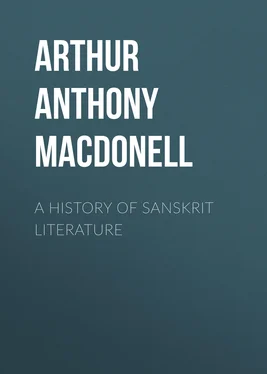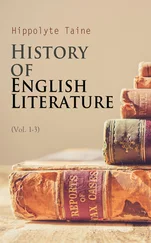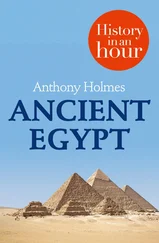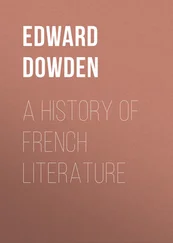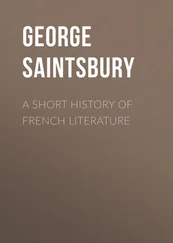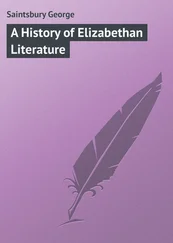Arthur Anthony MacDonell - A History of Sanskrit Literature
Здесь есть возможность читать онлайн «Arthur Anthony MacDonell - A History of Sanskrit Literature» — ознакомительный отрывок электронной книги совершенно бесплатно, а после прочтения отрывка купить полную версию. В некоторых случаях можно слушать аудио, скачать через торрент в формате fb2 и присутствует краткое содержание. Жанр: foreign_prose, foreign_antique, на английском языке. Описание произведения, (предисловие) а так же отзывы посетителей доступны на портале библиотеки ЛибКат.
- Название:A History of Sanskrit Literature
- Автор:
- Жанр:
- Год:неизвестен
- ISBN:нет данных
- Рейтинг книги:5 / 5. Голосов: 1
-
Избранное:Добавить в избранное
- Отзывы:
-
Ваша оценка:
- 100
- 1
- 2
- 3
- 4
- 5
A History of Sanskrit Literature: краткое содержание, описание и аннотация
Предлагаем к чтению аннотацию, описание, краткое содержание или предисловие (зависит от того, что написал сам автор книги «A History of Sanskrit Literature»). Если вы не нашли необходимую информацию о книге — напишите в комментариях, мы постараемся отыскать её.
A History of Sanskrit Literature — читать онлайн ознакомительный отрывок
Ниже представлен текст книги, разбитый по страницам. Система сохранения места последней прочитанной страницы, позволяет с удобством читать онлайн бесплатно книгу «A History of Sanskrit Literature», без необходимости каждый раз заново искать на чём Вы остановились. Поставьте закладку, и сможете в любой момент перейти на страницу, на которой закончили чтение.
Интервал:
Закладка:
This later phase of the ancient language of India was stereotyped by the great grammarian Pāṇini towards the end of the fourth century B.C. It came to be called Sanskrit, the “refined” or “elaborate” ( saṃ-skṛi-ta , literally “put together”), a term not found in the older grammarians, but occurring in the earliest epic, the Rāmāyaṇa . The name is meant to be opposed to that of the popular dialects called Prākṛita , and is so opposed, for instance, in the Kāvyādarça , or Mirror of Poetry , a work of the sixth century A.D. The older grammarians themselves, from Yāska (fifth century B.C.) onwards, speak of this classical dialect as Bhāshā , “the speech,” in distinction from Vedic. The remarks they make about it point to a spoken language. Thus one of them, Patanjali, refers to it as used “in the world,” and designates the words of his Sanskrit as “current in the world.” Pāṇini himself gives many rules which have no significance except in connection with living speech; as when he describes the accent or the lengthening of vowels in calling from a distance, in salutation, or in question and answer. Again, Sanskrit cannot have been a mere literary and school language, because there are early traces of its having had dialectic variations. Thus Yāska and Pāṇini mention the peculiarities of the “Easterns” and “Northerners,” Kātyāyana refers to local divergences, and Patanjali specifies words occurring in single districts only. There is, indeed, no doubt that in the second century B.C. Sanskrit was actually spoken in the whole country called by Sanskrit writers Āryāvarta, or “Land of the Aryans,” which lies between the Himālaya and the Vindhya range. But who spoke it there? Brahmans certainly did; for Patanjali speaks of them as the “instructed” ( çishṭa ), the employers of correct speech. Its use, however, extended beyond the Brahmans; for we read in Patanjali about a head-groom disputing with a grammarian as to the etymology of the Sanskrit word for “charioteer” ( sūta ). This agrees with the distribution of the dialects in the Indian drama, a distribution doubtless based on a tradition much older than the plays themselves. Here the king and those of superior rank speak Sanskrit, while the various forms of the popular dialect are assigned to women and to men of the people. The dramas also show that whoever did not speak Sanskrit at any rate understood it, for Sanskrit is there employed in conversation with speakers of Prākrit. The theatrical public, and that before which, as we know from frequent references in the literature, the epics were recited, must also have understood Sanskrit. Thus, though classical Sanskrit was from the beginning a literary and, in a sense, an artificial dialect, it would be erroneous to deny to it altogether the character of a colloquial language. It is indeed, as has already been mentioned, even now actually spoken in India by learned Brahmans, as well as written by them, for every-day purposes. The position of Sanskrit, in short, has all along been, and still is, much like that of Hebrew among the Jews or of Latin in the Middle Ages.
Whoever was familiar with Sanskrit at the same time spoke one popular language or more. The question as to what these popular languages were brings us to the relation of Sanskrit to the vernaculars of India. The linguistic importance of the ancient literary speech for the India of to-day will become apparent when it is pointed out that all the modern dialects—excepting those of a few isolated aboriginal hill tribes—spoken over the whole vast territory between the mouths of the Indus and those of the Ganges, between the Himālaya and the Vindhya range, besides the Bombay Presidency as far south as the Portuguese settlement of Goa, are descended from the oldest form of Sanskrit. Starting from their ancient source in the north-west, they have overflowed in more and more diverging streams the whole peninsula except the extreme south-east. The beginnings of these popular dialects go back to a period of great antiquity. Even at the time when the Vedic hymns were composed, there must have existed a popular language which already differed widely in its phonetic aspect from the literary dialect. For the Vedic hymns contain several words of a phonetic type which can only be explained by borrowings on the part of their composers from popular speech.
We further know that in the sixth century B.C., Buddha preached his gospel in the language of the people, as opposed to that of the learned, in order that all might understand him. Thus all the oldest Buddhist literature dating from the fourth or fifth century B.C. was composed in the vernacular, originally doubtless in the dialect of Magadha (the modern Behar), the birthplace of Buddhism. Like Italian, as compared with Latin, this early popular speech is characterised by the avoidance of conjunct consonants and by fondness for final vowels. Thus the Sanskrit sūtra , “thread,” and dharma , “duty,” become sutta and dhamma respectively, while vidyut , “lightning,” is transformed into vijju . The particular form of the popular language which became the sacred idiom of Southern Buddhism is known by the name of Pāli. Its original home is still uncertain, but its existence as early as the third century B.C. is proved beyond the range of doubt by the numerous rock and pillar inscriptions of Açoka. This dialect was in the third century B.C. introduced into Ceylon, and became the basis of Singhalese, the modern language of the island. It was through the influence of Buddhism that, from Açoka’s time onwards, the official decrees and documents preserved in inscriptions were for centuries composed exclusively in Middle Indian (Prākrit) dialects. Sanskrit was not familiar to the chanceries during these centuries, though the introduction of Sanskrit verses in Prākrit inscriptions shows that Sanskrit was alive during this period, and proves its continuity for literary purposes. The older tradition of both the Buddhist and the Jain religion, in fact, ignored Sanskrit entirely, using only the popular dialects for all purposes.
But in course of time both the Buddhists and the Jains endeavoured to acquire a knowledge of Sanskrit. This led to the formation of an idiom which, being in the main Prākrit, was made to resemble the old language by receiving Sanskrit endings and undergoing other adaptations. It is therefore decidedly wrong to consider this artificial dialect an intermediate stage between Sanskrit and Pāli. This peculiar type of language is most pronounced in the poetical pieces called gāthā or “song,” which occur in the canonical works of the Northern Buddhists, especially in the Lalita-vistara , a life of Buddha. Hence it was formerly called the Gāthā dialect. The term is, however, inaccurate, as Buddhist prose works have also been written in this mixed language.
The testimony of the inscriptions is instructive in showing the gradual encroachment of Sanskrit on the popular dialects used by the two non-Brahmanical religions. Thus in the Jain inscriptions of Mathurā (now Muttra), an almost pure Prākrit prevails down to the first century A.D. After that Sanskritisms become more and more frequent, till at last simple Sanskrit is written. Similarly in Buddhist inscriptions pure Prākrit is relieved by the mixed dialect, the latter by Sanskrit. Thus in the inscriptions of Nāsik, in Western India, the mixed dialect extends into the third, while Sanskrit first begins in the second century A.D. From the sixth century onwards Sanskrit prevails exclusively (except among the Jains) in inscriptions, though Prākritisms often occur in them. Even in the literature of Buddhism the mixed dialect was gradually supplanted by Sanskrit. Hence most of the Northern Buddhist texts have come down to us in Sanskrit, which, however, diverges widely in vocabulary from that of the sacred texts of the Brahmans, as well as from that of the classical literature, since they are full of Prākrit words. It is expressly attested by the Chinese pilgrim, Hiouen Thsang, that in the seventh century the Buddhists used Sanskrit even in oral theological discussions. The Jains finally did the same, though without entirely giving up Prākrit. Thus by the time of the Muhammadan conquest Sanskrit was almost the only written language of India. But while Sanskrit was recovering its ancient supremacy, the Prākrits had exercised a lasting influence upon it in two respects. They had supplied its vocabulary with a number of new words, and had transformed into a stress accent the old musical accent which still prevailed after the days of Pāṇini.
Читать дальшеИнтервал:
Закладка:
Похожие книги на «A History of Sanskrit Literature»
Представляем Вашему вниманию похожие книги на «A History of Sanskrit Literature» списком для выбора. Мы отобрали схожую по названию и смыслу литературу в надежде предоставить читателям больше вариантов отыскать новые, интересные, ещё непрочитанные произведения.
Обсуждение, отзывы о книге «A History of Sanskrit Literature» и просто собственные мнения читателей. Оставьте ваши комментарии, напишите, что Вы думаете о произведении, его смысле или главных героях. Укажите что конкретно понравилось, а что нет, и почему Вы так считаете.
